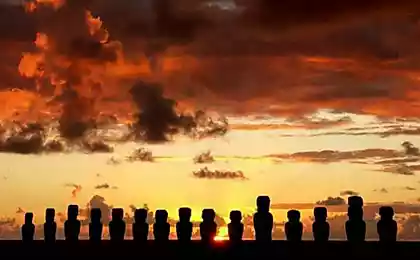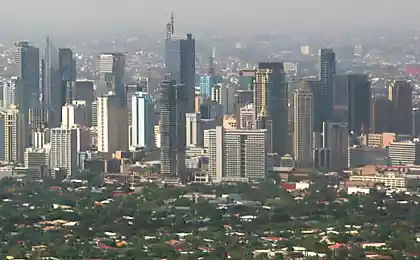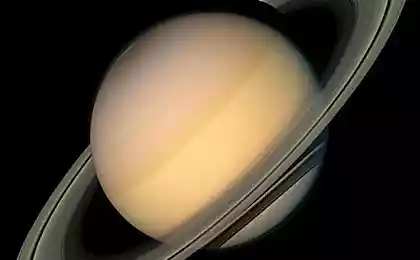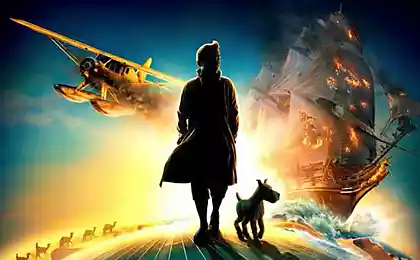630
The mystery of the fourth planet
Mars is located on the border of the so-called "zone of life" - the climatic conditions on the planet Earth is much tougher, but still acceptable for organic life forms. In the summer at the equator at noon the temperature reaches 20 ° C, a long winter it can drop below minus 140 ° C - twice as cold very fierce winter in Antarctica.
Mars 9 times lighter earth. The atmosphere of the Red Planet on 95% consists of carbon dioxide, and it corresponds to the density of Earth's atmosphere at an altitude of 40 km - walk without a suit over human instantaneous death.
Photo: exactly 50 years ago, on Nov. 1, 1962, the Soviet space station ...
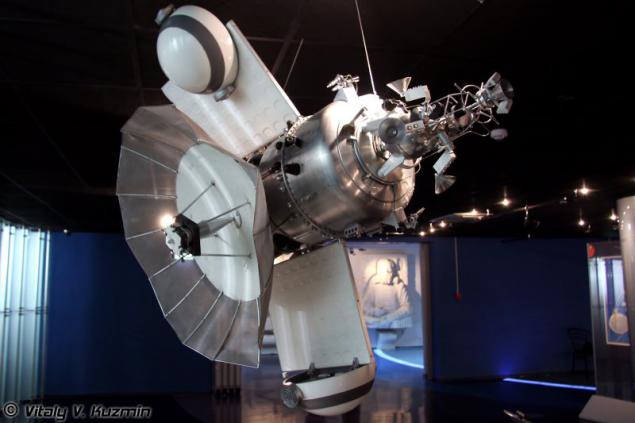
On the surface of the Red Planet is the highest volcano in the solar system * - Martian Olympus height of 27 kilometers, the base diameter of 600 km. The slopes of a long extinct volcano framed by steep precipices semikilometrovymi - should be a spectacular landscape! Gore is so high that its top atmospheric conditions correspond to the open space.
The longest and deepest canyon in the solar system, too, is on Mars. Valles Marineris stretches along the equator at 4500 kilometers, and its depth reaches 11 kilometers ...
Photo: supervolcano
Posted in [mergetime] 1351954498 [/ mergetime]
As you may have guessed, on Mars is full of attractions and mysterious places. Mars has long attracted the attention of researchers of the earth - the planet closest to us, with its own atmosphere, and all the signs of favorable conditions for the emergence of extraterrestrial life. This furor has made the discovery "channels" on the surface of Mars - then even the most stubborn skeptics believe in the existence of a Martian civilization.
Gone decades and "Martian canal" were an optical illusion. Sensitive spectrograph found the atmosphere of Mars in the absence of oxygen and water vapor - the key elements for life (at least in her our, earthly sense), melted away the last hopes for the detection of brothers on reason. But there was a beautiful dream of the distant world, where it may be someday blossom apple orchards ...
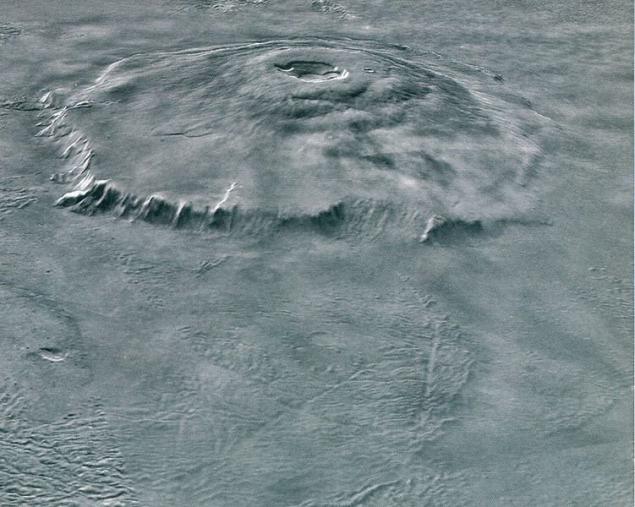
Exactly 50 years ago, November 1, 1962, mankind has made a step towards his dream: a Soviet spacecraft was first launched on the flight path to the Red Planet. Automatic interplanetary station "Mars-1" should be the goal was to deliver a half-ton of scientific instruments and apparatus. Soviet scientists planned to really daring expedition: the machine had to check the possibility of deep space communications, to conduct studies of the properties of the interplanetary medium, collect data on cosmic radiation and flows of micrometeorites, take pictures of Mars at close range, to study the magnetic field and the characteristics of the atmosphere of the Red Planet, and, as far as possible, try to answer the question: "Is there life on Mars?».
Booster "Lightning" has successfully placed into orbit the station, including the upper stage - and "Mars-1" set out on their long 7-month journey to the Red Planet.
Interplanetary probes silently flying in the icy void, only occasionally "tossing and turning" from side to side. Most of the time its solar panels are directed strictly to the Sun, but at some point, light sensors gaze into the velvety blackness of space, trying to see stars twinkling Canopus - that to this point is "tied" the orientation of the probe. After receiving the necessary information, on-board computer calculates the new position of the station in space - antenna turns towards the Earth. It is time to transmit telemetry. During the flight, "Mars-1" conducted 61 radio session, during which the earth gave valuable information about the magnetic fields of the Earth and interplanetary medium, about the properties of "solar wind" - a stream of charged particles from the Sun, and the meteor shower.
But do not come true dreams of scientists - at a distance of 106 million kilometers from Earth occurred depressurization cylinders orientation system. Together with the compressed nitrogen "Mars-1 'loses the possibility of orientation in space. In vain probe called for help of its creators - the signals from the probe could not be heard in the world.
June 19, 1963, according to ballistic calculations, the Soviet interplanetary station passed in the vicinity of Mars, becoming the first man-made object to visit the Red Planet.
Photo: Gusev Crater. It worked rover Spirit

Why in space battleships
The sixties of the twentieth century was a time of true triumph of the Soviet space program: the first man in space, the first multi-seat spacecraft, the first step into space - going beyond the ship in a spacesuit, the first maneuver in orbit, the first photo of the back side of the moon, the Soviet station on the surface of Venus Mars ... the Soviet Union launched into orbit each year 100 spacecraft - in our time is not so much to run all of the world combined.
Expeditions to distant planets demanded the establishment of ground infrastructure, first of all, deep space communications systems. It was necessary to hear a faint "beep" interplanetary probes through the hundreds of millions of kilometers of space, through the interference and magnetic storms, through the solar wind and the Earth's radio signals. 100 million kilometers ... how to present such an incredible distance? Cars, continuously rushing down the highway at 100 km / h will require 114 years to overcome this distance!
The challenge required extraordinary solutions. As a result, in the environs of the city there were three strange object - ADU-1000 antennas of the Deep Space Communication "Pluto." A total of three - two receivers and one transmitter. Each antenna ROV-1000 is a block of eight parabolic dishes with a diameter of 16 meters, installed on the turntable. The total weight of construction - 1500 tons!
At any time, at the request of the operator, the antenna unit must send their "eyes" to the desired point of the sky. But how to achieve the perfect pointing accuracy - up to 1 arc minute when the movable parts weigh more than a thousand tons?
This is where radio astronomers came shipbuilders. 8 antenn- "saucers" are fixed on a huge span of the railway bridge, and the entire system is mounted on the slewing tower of the main fire on the unfinished battleship "Stalingrad". Know ours!
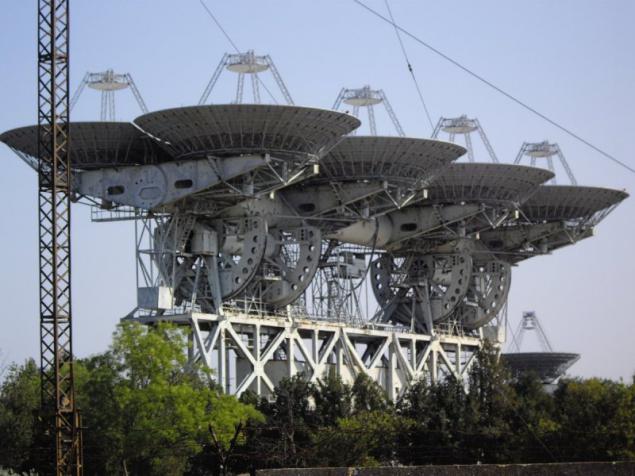
Mars is waiting for new heroes
Over the previous 20 years, Russia has sent to Mars only two scientific expeditions: the failed Mars 96 and the infamous Phobos-Grunt. Despite upbeat statements by the Russian Space Agency: "Yes, all nishtyak! Right now, recovered and it will work "- even the simple townsfolk, it became clear that the Russian space program is in deep cesspool. Technologies for the exploration of outer space - great legacy of the Soviet Union, for Russia as the old grandfather's suitcase with tools: drag and hard, and throw a pity. How do I fix this situation? Base on the Moon is unlikely to help, it may be better to draw all the attention is on the quality of space launches.
There are some positive things in this story? Of course! Despite the absence of their own launches, Russian specialists regularly participate in programs of NASA. For example - a joint Russian-American expedition to Mars Polar Lander. Unfortunately, the mission was unsuccessful - the machine crashed during landing. Do not be so deafening whistle and shake his head - over the last 15 years the Americans themselves have ruined three Martian expedition. The truth is there is such a thing: besides the three failures, they had 8 successful missions.
Yes, space is not an easy walk, but I believe that there is no limit of the human thirst for knowledge. There must necessarily be repeated expedition "Phobos-Grunt" - the next time the device successfully delivers the soil from the Martian satellite to Earth. But you need to hurry - calculations show that Phobos is too low orbit a few million, he will burn in the Martian atmosphere.
* Martian volcano Olympus is the highest among all the known peaks on planets and moons of the solar system. The highest volcano in the world is almost three times lower than the Martian giant - the height of Mauna Kea is only 10 kilometers. No, the author has not gone mad and is well aware that the greatest top of the world is Mount Everest (8,848 m). The trick is that the volcano Mauna Kea is not on land, and at the bottom of the Pacific Ocean - the water rises just the tip of the height of 4205 meters. But in fact, the highest - is underwater volcano.
Photo: In the red dust, with a temperature of minus 100 degrees Celsius, the rovers Spirit and Opportunity found ancient human heads. Do you want to - believe it. Do you want to - no ...
Source: topwar.ru.
ALL!

Source:
Mars 9 times lighter earth. The atmosphere of the Red Planet on 95% consists of carbon dioxide, and it corresponds to the density of Earth's atmosphere at an altitude of 40 km - walk without a suit over human instantaneous death.
Photo: exactly 50 years ago, on Nov. 1, 1962, the Soviet space station ...

On the surface of the Red Planet is the highest volcano in the solar system * - Martian Olympus height of 27 kilometers, the base diameter of 600 km. The slopes of a long extinct volcano framed by steep precipices semikilometrovymi - should be a spectacular landscape! Gore is so high that its top atmospheric conditions correspond to the open space.
The longest and deepest canyon in the solar system, too, is on Mars. Valles Marineris stretches along the equator at 4500 kilometers, and its depth reaches 11 kilometers ...
Photo: supervolcano
Posted in [mergetime] 1351954498 [/ mergetime]
As you may have guessed, on Mars is full of attractions and mysterious places. Mars has long attracted the attention of researchers of the earth - the planet closest to us, with its own atmosphere, and all the signs of favorable conditions for the emergence of extraterrestrial life. This furor has made the discovery "channels" on the surface of Mars - then even the most stubborn skeptics believe in the existence of a Martian civilization.
Gone decades and "Martian canal" were an optical illusion. Sensitive spectrograph found the atmosphere of Mars in the absence of oxygen and water vapor - the key elements for life (at least in her our, earthly sense), melted away the last hopes for the detection of brothers on reason. But there was a beautiful dream of the distant world, where it may be someday blossom apple orchards ...

Exactly 50 years ago, November 1, 1962, mankind has made a step towards his dream: a Soviet spacecraft was first launched on the flight path to the Red Planet. Automatic interplanetary station "Mars-1" should be the goal was to deliver a half-ton of scientific instruments and apparatus. Soviet scientists planned to really daring expedition: the machine had to check the possibility of deep space communications, to conduct studies of the properties of the interplanetary medium, collect data on cosmic radiation and flows of micrometeorites, take pictures of Mars at close range, to study the magnetic field and the characteristics of the atmosphere of the Red Planet, and, as far as possible, try to answer the question: "Is there life on Mars?».
Booster "Lightning" has successfully placed into orbit the station, including the upper stage - and "Mars-1" set out on their long 7-month journey to the Red Planet.
Interplanetary probes silently flying in the icy void, only occasionally "tossing and turning" from side to side. Most of the time its solar panels are directed strictly to the Sun, but at some point, light sensors gaze into the velvety blackness of space, trying to see stars twinkling Canopus - that to this point is "tied" the orientation of the probe. After receiving the necessary information, on-board computer calculates the new position of the station in space - antenna turns towards the Earth. It is time to transmit telemetry. During the flight, "Mars-1" conducted 61 radio session, during which the earth gave valuable information about the magnetic fields of the Earth and interplanetary medium, about the properties of "solar wind" - a stream of charged particles from the Sun, and the meteor shower.
But do not come true dreams of scientists - at a distance of 106 million kilometers from Earth occurred depressurization cylinders orientation system. Together with the compressed nitrogen "Mars-1 'loses the possibility of orientation in space. In vain probe called for help of its creators - the signals from the probe could not be heard in the world.
June 19, 1963, according to ballistic calculations, the Soviet interplanetary station passed in the vicinity of Mars, becoming the first man-made object to visit the Red Planet.
Photo: Gusev Crater. It worked rover Spirit

Why in space battleships
The sixties of the twentieth century was a time of true triumph of the Soviet space program: the first man in space, the first multi-seat spacecraft, the first step into space - going beyond the ship in a spacesuit, the first maneuver in orbit, the first photo of the back side of the moon, the Soviet station on the surface of Venus Mars ... the Soviet Union launched into orbit each year 100 spacecraft - in our time is not so much to run all of the world combined.
Expeditions to distant planets demanded the establishment of ground infrastructure, first of all, deep space communications systems. It was necessary to hear a faint "beep" interplanetary probes through the hundreds of millions of kilometers of space, through the interference and magnetic storms, through the solar wind and the Earth's radio signals. 100 million kilometers ... how to present such an incredible distance? Cars, continuously rushing down the highway at 100 km / h will require 114 years to overcome this distance!
The challenge required extraordinary solutions. As a result, in the environs of the city there were three strange object - ADU-1000 antennas of the Deep Space Communication "Pluto." A total of three - two receivers and one transmitter. Each antenna ROV-1000 is a block of eight parabolic dishes with a diameter of 16 meters, installed on the turntable. The total weight of construction - 1500 tons!
At any time, at the request of the operator, the antenna unit must send their "eyes" to the desired point of the sky. But how to achieve the perfect pointing accuracy - up to 1 arc minute when the movable parts weigh more than a thousand tons?
This is where radio astronomers came shipbuilders. 8 antenn- "saucers" are fixed on a huge span of the railway bridge, and the entire system is mounted on the slewing tower of the main fire on the unfinished battleship "Stalingrad". Know ours!

Mars is waiting for new heroes
Over the previous 20 years, Russia has sent to Mars only two scientific expeditions: the failed Mars 96 and the infamous Phobos-Grunt. Despite upbeat statements by the Russian Space Agency: "Yes, all nishtyak! Right now, recovered and it will work "- even the simple townsfolk, it became clear that the Russian space program is in deep cesspool. Technologies for the exploration of outer space - great legacy of the Soviet Union, for Russia as the old grandfather's suitcase with tools: drag and hard, and throw a pity. How do I fix this situation? Base on the Moon is unlikely to help, it may be better to draw all the attention is on the quality of space launches.
There are some positive things in this story? Of course! Despite the absence of their own launches, Russian specialists regularly participate in programs of NASA. For example - a joint Russian-American expedition to Mars Polar Lander. Unfortunately, the mission was unsuccessful - the machine crashed during landing. Do not be so deafening whistle and shake his head - over the last 15 years the Americans themselves have ruined three Martian expedition. The truth is there is such a thing: besides the three failures, they had 8 successful missions.
Yes, space is not an easy walk, but I believe that there is no limit of the human thirst for knowledge. There must necessarily be repeated expedition "Phobos-Grunt" - the next time the device successfully delivers the soil from the Martian satellite to Earth. But you need to hurry - calculations show that Phobos is too low orbit a few million, he will burn in the Martian atmosphere.
* Martian volcano Olympus is the highest among all the known peaks on planets and moons of the solar system. The highest volcano in the world is almost three times lower than the Martian giant - the height of Mauna Kea is only 10 kilometers. No, the author has not gone mad and is well aware that the greatest top of the world is Mount Everest (8,848 m). The trick is that the volcano Mauna Kea is not on land, and at the bottom of the Pacific Ocean - the water rises just the tip of the height of 4205 meters. But in fact, the highest - is underwater volcano.
Photo: In the red dust, with a temperature of minus 100 degrees Celsius, the rovers Spirit and Opportunity found ancient human heads. Do you want to - believe it. Do you want to - no ...
Source: topwar.ru.
ALL!

Source:

